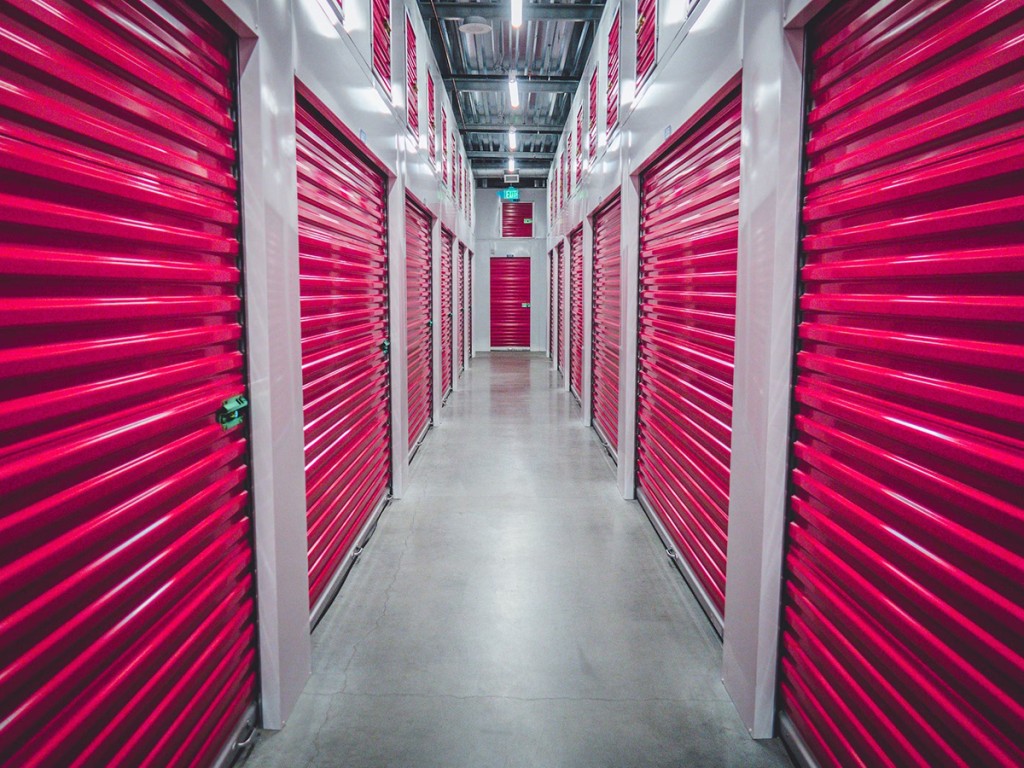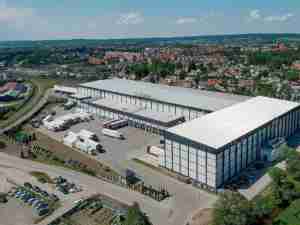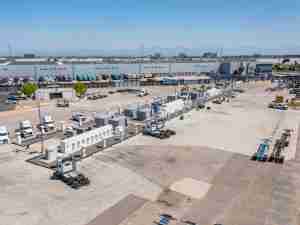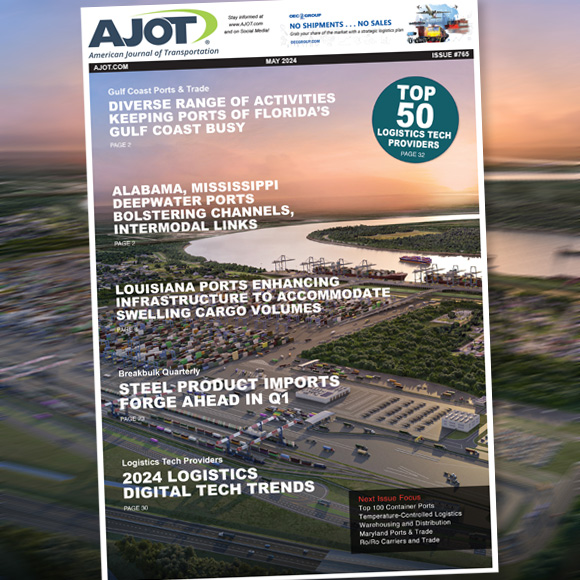
Transportation and logistics have seen their share of challenges in recent times. These have been turbulent times, from concerns about reducing the global supply chain footprint to the impact of gas prices amid geopolitical turmoil. New challenges don’t negate old, ever-present ones; however, cold chain logistics still have to account for the integrity of perishable goods. It entails maintaining a controlled temperature environment from production to delivery, ensuring that goods like fresh produce, pharmaceuticals, and even vaccines reach their destinations in optimal condition. So, join us today as we embark on a journey through the chilled corridors of this essential logistical process.
The Need for Effective Cold Chain Management
Indeed, effective cold chain management is the linchpin of preserving perishable goods during their journey from origin to destination. This intricate process relies on three main components: refrigerated trucks, specialized warehouses, and vigilant monitoring systems.
All three synergize in their common goal of preventing and combating temperature fluctuations, which can wreak havoc on perishable items. Indeed, even slight deviations from the ideal conditions can lead to spoilage, diminished quality, and even safety risks for products like vaccines or certain pharmaceuticals.
This is why cold chain management is not merely a convenience but an absolute necessity. It's why Fortune Business Insights finds that “the global cold chain logistics market is projected to grow from $242.39 billion in 2021 to $647.47 billion by 2028, exhibiting a CAGR of 15.1% in forecast period”. It’s a booming market precisely because it’s the shield between quality goods and potential loss. By maintaining a consistent, controlled environment, we not only extend the shelf life of these valuable products but also ensure that they reach consumers in the best possible condition.
Benefits of Cold Chain Management
With that in mind, cold chain management offers many invaluable benefits to the transportation and logistics industry.
Firstly, it leads to prolonged shelf life and significantly reduces spoilage rates of perishable goods. This means that delicate items like fresh produce, pharmaceuticals, and vaccines stay in top-notch condition for longer periods, minimizing waste and increasing the availability of high-quality products for consumers.
Moreover, it ensures that the nutritional value and overall quality of these goods are maintained at their peak, providing consumers with products that are not only safe but also nutritious. This factor was, notably, a substantial driver behind Amazon Web Services and Carrier Global Corporation’s collaboration in 2020.
Lastly, in addition to these direct advantages, effective cold chain management guarantees compliance with regulatory standards and industry requirements. This builds trust with consumers and positions companies as responsible players in the global supply chain, contributing to a more reliable and secure transportation network overall. In this regard, City Movers aptly points out that regulatory standards have far-reaching effects, impacting not only the relocation industry but the broader transportation sector as well. By adhering to these guidelines, businesses demonstrate their commitment to safety, quality, and integrity in handling perishable goods.
Implementing a Robust Cold Chain Logistics System
The first crucial step is selecting the right mode of transportation, be it reefers, air freight, or sea freight. Each mode offers unique advantages, and choosing the one that aligns with the specific requirements of the goods is paramount in maintaining their quality.
Equally important is the selection of appropriate packaging materials. These materials serve as a shield, providing insulation and protection against external factors that could compromise the integrity of the goods.
Furthermore, integrating temperature monitoring devices and GPS trackers is fundamental to a well-functioning cold chain logistics system. These devices act as vigilant guardians, constantly assessing and reporting the conditions within the transportation container. This real-time data is invaluable, allowing immediate response to deviations from the desired temperature range.
With the assistance of advanced technology, businesses can have full confidence in the integrity and quality of their perishable goods. In essence, implementing a robust system is the bedrock upon which the successful preservation of perishable goods relies, ensuring they reach their destination in optimal condition.
Temperature-Controlled Warehousing
In this context, temperature-controlled warehousing is a critical pillar in the process. These specialized storage facilities play a pivotal role in maintaining the integrity of perishable goods. The benefits of a climate controlled storage are numerous. In combination, they ensure that products like fresh produce, pharmaceuticals, and vaccines remain at their optimal temperature, safeguarding their quality and safety.
That said, effective warehouse design and layout are paramount in maximizing the benefits of temperature control. This includes strategically positioning cooling units, insulation, and airflow systems to guarantee uniform conditions throughout the storage space. However, cold storage design is a complex subject best explored in its own article.
Furthermore, effective inventory management strategies are key to preventing stockouts and overstocking. This involves closely monitoring stock levels, setting reorder points, and employing advanced forecasting techniques.
By balancing supply and demand, businesses can avoid costly disruptions in the cold chain. In essence, temperature-controlled warehousing is the linchpin in preserving the quality and safety of perishable goods, ensuring they reach consumers in the best possible condition.
Monitoring and Maintenance
Real-time monitoring of temperature and humidity levels is the bedrock of this process. It allows immediate response to deviations from the ideal conditions, preventing potential spoilage or quality degradation. Equally crucial are the alarms and contingency plans in place for such situations. These serve as a safety net, triggering prompt actions to rectify unexpected changes.
Regular refrigeration equipment and vehicle maintenance are also essential for a seamless cold chain operation. This includes routine inspections, servicing, and calibrations to guarantee optimal performance. By upholding these practices, businesses can fortify their reliability and effectiveness, ensuring that perishable goods traverse the supply chain in pristine condition.
Compliance and Regulatory Considerations
Moreover, and likely self-evidently, compliance and regulatory considerations are paramount. As Science Direct notes, “appropriate and uninterrupted temperature control […] is important to preserve the original organoleptic properties of food, maintain food safety, reduce waste, minimize the risk of foodborne diseases, and improve the overall economic performance of the cold chain” – and international and local regulations are increasingly taking notice.
Understanding the international and local regulations that govern this specialized field is crucial, as these guidelines set the framework for ensuring the safe and secure transportation of perishable goods. A key aspect of compliance involves meticulous documentation and record-keeping for every perishable shipment. This includes detailed information about temperature logs, handling procedures, and product specifications.
Moreover, businesses must prioritize adherence to industry standards for both quality and safety. This involves implementing best practices in packaging, handling, and storage of perishable goods. By strictly following these regulations and standards, companies safeguard the quality of their products and demonstrate their commitment to responsible and reliable cold chain logistics.
Handling Emergencies and Contingencies
Finally, preparing for emergencies and contingencies is paramount. This involves the development of a robust contingency plan, meticulously crafted to address unforeseen events that could potentially disrupt the cold chain. Such events may include power outages, equipment failures, or adverse weather conditions, which can significantly impact the temperature-controlled environment.
Understandably, being equipped to respond swiftly and effectively is crucial. This may involve backup power sources, well-maintained equipment, and clear communication channels. It's also essential to have contingency protocols in case of adverse weather conditions or other unexpected challenges. By proactively planning for emergencies, businesses can minimize disruptions, protect the integrity of perishable goods, and maintain the trust of customers and partners in their cold chain logistics operations.
Conclusion
In the dynamic world of transportation and logistics, the significance of cold chain logistics cannot be overstated. It is the linchpin in preserving the quality and safety of perishable goods, from farm to table or factory to patient. By meticulously managing temperature, utilizing advanced technology, and adhering to regulatory standards, businesses ensure that delicate products reach their destinations in optimal condition. Furthermore, it is the backbone of a trustworthy and efficient supply chain, ultimately delivering quality products to consumers around the globe. And in turbulent times like these, it may be more important than ever.







